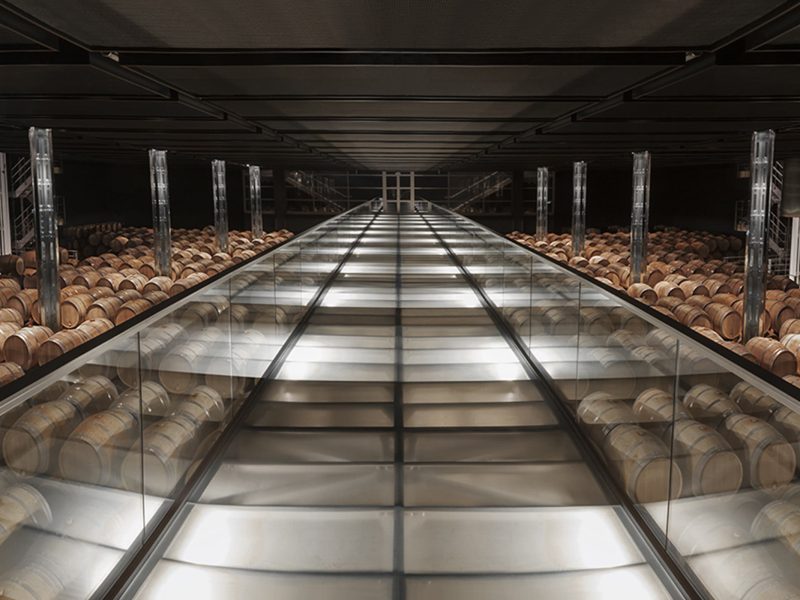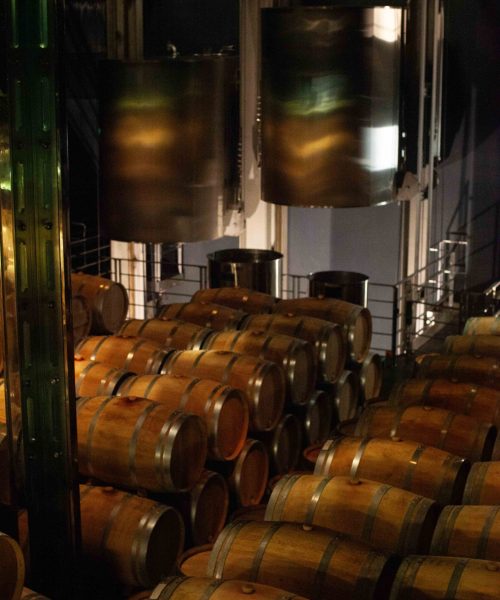Although it is sometimes criticized for excessively marking certain wines, élevage in 225-liter Bordeaux barrels is a crucial moment in crafting the wines of Cos d’Estournel. Finding the right balance is key.


Although it is sometimes criticized for excessively marking certain wines, élevage in 225-liter Bordeaux barrels is a crucial moment in crafting the wines of Cos d’Estournel. Finding the right balance is key.

As climate change brings riper vintages, élevage requires infinite precision. For Dominique Arangoïts, Technical Director at Cos d’Estournel, considering the evolution of the ripening process is primordial, especially when it comes to the estate’s Cabernet Sauvignon: “Forty years ago, the tannins in Médoc wines were livelier on the palate and needed more wood to become supple. Today, wines are accessible earlier on.”
Does that mean today’s wines have less aging potential than their predecessors?
But time has since proven they were wrong! Indeed, wines may be more accessible young, but they remain adapted to long cellaring thanks to the process of élevage, which constitutes “a preparation for aging.”
Breathe in, breathe out: the secrets of micro-oxygenation
The impact of oxygen on the tannins in wine is essential. This is where the barrel comes in, for wood is porous and allows wine to come into contact with oxygen, which in turn stabilizes the color of the wine and softens its tannins, preparing it for the aging process and increasing its cellaring potential.
The barrel offers another advantage, according to Dominique: “It is a powerful decanting tool: because it is a small container, sediments settle more quickly at the bottom.” The separation of the wine from its lees during racking increases contact between wine and oxygen. At Cos d’Estournel, the wine is racked through the bunghole without pumping, and the estate’s gravity-flow facilities make it possible to leverage the barrel’s potential to the fullest.


Gravity at the heart of élevage
The estate’s gravity-flow cellars were built in 2008 with the aim of achieving purity and precision while preserving the fruitiness of the estate’s wines. Barrels with light toast—which offer a more delicate aromatic impact—are used to maintain a certain balance. The quantity of new wood has also been reduced, and 50% of vinification takes place in new barrels for Cos d’Estournel and 25% for Pagodes. The newer a barrel, the greater its porosity, and “Cos d’Estournel has more tannins than Pagodes de Cos,” according to Dominique, “so it needs more new barrels.” Élevage has never been very long at the estate, generally twelve months for Pagodes and fourteen months for Cos d’Estournel.
All of the barrels are made of French oak and sourced from some ten different cooperages. Some of them underscore fruity aromas, while others bring spiciness to the wines. This diversity is crucial in achieving the desired balance. Following a second round of racking, the wines from the different barrels are blended, bringing the wine to life a second time around.
For Dominique, “The blend is always better than the best barrel on its own.”